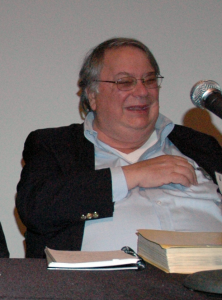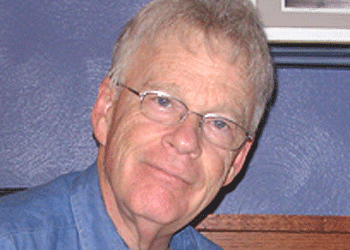From the NERW Archives
Yup, we’ve been doing this a long time now, and so we’re digging back into the vaults for a look at what NERW was covering one, five, ten, fifteen and twenty years ago this week, or thereabouts.
Note that the column appeared on an erratic schedule in its earliest years as “New England Radio Watch,” and didn’t go to a regular weekly schedule until 1997.
One Year Ago: March 20, 2017
*As broadcast television prepares for its next big transition, there are two parallel stories developing this week that both seem poised to put Sinclair at the center of the TV landscape over the next few years – and yet, unless we’ve missed something, nobody’s put all the pieces together until now.
 Sinclair has, of course, been very much in the headlines over its rumored bid to acquire the big-market TV licenses of Tribune Broadcasting. Such a deal, which would be valued well into the billions of dollars, would give Sinclair entree into Los Angeles (KTLA), Chicago (WGN), Dallas (KDAF) and other big markets around the country – as well as several of the big markets in NERW-land where Sinclair doesn’t yet have stations. Sinclair has, of course, been very much in the headlines over its rumored bid to acquire the big-market TV licenses of Tribune Broadcasting. Such a deal, which would be valued well into the billions of dollars, would give Sinclair entree into Los Angeles (KTLA), Chicago (WGN), Dallas (KDAF) and other big markets around the country – as well as several of the big markets in NERW-land where Sinclair doesn’t yet have stations.
In New York, that’s WPIX (Channel 11), plus its sister stations in Philadelphia (WPHL channel 17), York/Harrisburg (WPMT channel 43) and Hartford (WTIC-TV Channel 61 and WCCT-TV channel 20).
Match those markets up with Sinclair’s current extensive footprint across the region, and the Smith family would end up with very little overlap (WPMT shares a market with Sinclair’s WHP-TV) and very few missing pieces. A full-on Sinclair/Tribune combination would still miss Boston (where Tribune sold WLVI to Sunbeam almost a decade ago) and a handful of smaller markets such as Bangor, Burlington, Utica, Binghamton, Elmira, Watertown and Erie.
*Beyond the obvious allure of expanding its footprint into Tribune’s big markets and of Tribune’s national cable presence via WGN America, though, there’s reason to think that Sinclair has another reason to want to move quickly to gain control of as much RF real estate as possible.
*The second piece of the puzzle this week comes from our TV Technology colleague Deborah McAdams, who broke the news that Sinclair and its medium-market rival Nexstar are joining forces for a spectrum-sharing partnership that will help to aid the next piece of TV’s big transition, the upcoming move from the current ATSC 1.0 standard to the new ATSC 3.0 standard.
McAdams reported on Wednesday that the two companies are creating “a consortium that will promote spectrum aggregation, innovation and monetization and enhance their abilities to compete in the wireless data transmission sector.”
 Say what? Here’s our understanding of the deal: while the spectrum auction finds wireless carriers paying billions of dollars to acquire the rights to what are now TV channels 38-51, Sinclair, Nexstar and other broadcasters are sitting on RF they already own – if only they can move the industry more quickly into ATSC 3.0 so it can be used for more than just one-way TV broadcasting. Say what? Here’s our understanding of the deal: while the spectrum auction finds wireless carriers paying billions of dollars to acquire the rights to what are now TV channels 38-51, Sinclair, Nexstar and other broadcasters are sitting on RF they already own – if only they can move the industry more quickly into ATSC 3.0 so it can be used for more than just one-way TV broadcasting.
To get there, though, means finding a way to speed up the move away from ATSC 1.0, which is why Sinclair is eager to partner with Nexstar and other broadcasters. As part of the consortium, for example, Sinclair and Nexstar could hypothetically agree to put all of their ATSC 1.0 signals in Providence (NBC from Sinclair’s WJAR, ABC and Fox from Nexstar’s WPRI/WNAC) on WJAR’s RF signal while launching ATSC 3.0 broadcasts on WPRI’s RF signal – and once ATSC 1.0 goes away, that extra RF spectrum could also go to ATSC 3.0 and be used for all sorts of things potentially more valuable than over-the-air TV in the 21st century.
Which brings us back to that Tribune deal: if Sinclair’s real goal here is to build a nationwide RF footprint, the combination of the Nexstar alliance (which fills in many smaller-market gaps) and the potential purchase of the Tribune signals begins to edge Sinclair close to that 100% goal, even before it attracts other broadcasters to its spectrum alliance, as it says it intends to do.
*Here in western NEW YORK, a routine “Morning Edition” fill-in for your editor on Friday morning took a sad turn just after 9 AM as the news broke of the death of veteran WXXI (1370 Rochester) talk host Bob Smith.
 Bob was just 20 when he started doing news at WHEN (620 Syracuse) in 1973. He left the next year to focus on his graduate studies at Cornell (he eventually got his Ph.D. in American history there), but he soon returned to radio, working at Buffalo’s WKBW, Rochester’s WAXC and Buffalo’s WBEN. The family business called in the mid-80s, when Bob helped run Smith Rubber Company for his father, but he returned to radio in 1988 to launch the new “1370 Connection” midday talk show for WXXI. Bob was just 20 when he started doing news at WHEN (620 Syracuse) in 1973. He left the next year to focus on his graduate studies at Cornell (he eventually got his Ph.D. in American history there), but he soon returned to radio, working at Buffalo’s WKBW, Rochester’s WAXC and Buffalo’s WBEN. The family business called in the mid-80s, when Bob helped run Smith Rubber Company for his father, but he returned to radio in 1988 to launch the new “1370 Connection” midday talk show for WXXI.
And for 25 years, that became the highlight of Bob’s career. His photographic memory and amazing knowledge of subjects far and wide made him an ideal choice to be the one-man production/booking/hosting staff of a daily two-hour show. When he wasn’t on the air, he was one of the earliest radio people to become active on the nascent internet, taking part in discussions on Compuserve, AOL, the early Usenet and eventually on every online radio forum known to humankind. (For many years, Bob also hosted the weekend “Sound Bytes” computer show on WXXI, helping to feed his love of technology.)
Bob suffered a massive stroke days before his 60th birthday in April 2013, ending his radio career. (The show became “Connections with Evan Dawson” at the start of 2014; your editor, meanwhile, served as an interim host/producer and continues to fill in there.) In recent years, Bob had been in a nursing home in Rochester, receiving a constant stream of visitors who kept him connected with the outside world. He was just 63 when he died early Friday morning; a few hours later, Dawson presented a memorial show on “Connections” (you can hear it here). Calling hours will be held Tuesday for Smith, followed by a funeral Mass Wednesday morning.
Five Years Ago: March 18, 2013
*When Stephen Mindich sold off the license to his last remaining radio property, WFNX (101.7 Lynn), nearly a year ago, the expectation was that he’d use the $14 million proceeds to bolster the rest of his alternative-media empire in and around eastern MASSACHUSETTS. That included Mindich’s flagship, the Boston Phoenix, as well as a new streaming incarnation of WFNX that relaunched last October.
 But that cash infusion apparently went only so far: on Thursday afternoon, the Boston media scene was rocked by the very sudden news that Mindich was pulling the plug on the Phoenix, effective immediately. Like its radio/webcast sister, the print weekly had been through a big year of transition, merging last summer with sister publication Stuff and swapping newsprint for a glossier look. That wasn’t enough to keep it from continuing to lose money in an environment where so many of the functions it once provided, from entertainment listings to political commentary to personal ads, had been usurped by the internet – and so Mindich shut down the Boston paper (but not its surviving Phoenix sisters in Providence and Portland) in the most abrupt way possible, sending its staff packing without severance and without the chance to put out a farewell issue. But that cash infusion apparently went only so far: on Thursday afternoon, the Boston media scene was rocked by the very sudden news that Mindich was pulling the plug on the Phoenix, effective immediately. Like its radio/webcast sister, the print weekly had been through a big year of transition, merging last summer with sister publication Stuff and swapping newsprint for a glossier look. That wasn’t enough to keep it from continuing to lose money in an environment where so many of the functions it once provided, from entertainment listings to political commentary to personal ads, had been usurped by the internet – and so Mindich shut down the Boston paper (but not its surviving Phoenix sisters in Providence and Portland) in the most abrupt way possible, sending its staff packing without severance and without the chance to put out a farewell issue.
While the social media universe was aflutter over the end of the Phoenix itself, the demise of the paper also meant the demise of WFNX.com’s latest incarnation. Much of its thunder was stolen by the Boston Globe’s Boston.com, which signed on its RadioBDC.com last August, just a few weeks after the end of WFNX on 101.7 and two months before the new WFNX.com. And while RadioBDC boasts a lineup of longtime WFNX veterans, the revived WFNX.com was staffed mostly by younger newcomers working alongside one WFNX vet, Kurt St. Thomas.
 And what happens when a bunch of young newcomers pour their hearts into creating an underdog of a station, only to find out on a Thursday afternoon that it’s all over? It”s a good thing WFNX.com is a webcast and not an FCC-licensed broadcast, because things got pretty FCC-unfriendly for a little while during what amounted to an on-air wake for WFNX around 4:00 on Thursday. It’s not often that you hear DJs openly admitting they’re not only getting drunk but also stoned in the studio (which led one local wag to quip that WFNX.com was “going out with a bong”), but it”s also hard to fault the FNX crew for their on-air disappointment at the end of what had been sounding like a pretty promising new venture. (It”s hard, too, to fault management for apparently cutting off the live jocks not long afterward.) And what happens when a bunch of young newcomers pour their hearts into creating an underdog of a station, only to find out on a Thursday afternoon that it’s all over? It”s a good thing WFNX.com is a webcast and not an FCC-licensed broadcast, because things got pretty FCC-unfriendly for a little while during what amounted to an on-air wake for WFNX around 4:00 on Thursday. It’s not often that you hear DJs openly admitting they’re not only getting drunk but also stoned in the studio (which led one local wag to quip that WFNX.com was “going out with a bong”), but it”s also hard to fault the FNX crew for their on-air disappointment at the end of what had been sounding like a pretty promising new venture. (It”s hard, too, to fault management for apparently cutting off the live jocks not long afterward.)
For now, WFNX.com is “alive,” sort of, continuing to stream automated music. It’s not yet clear how long that will continue; it is clear, though, that the legacy of the original WFNX has now come to a close after an even thirty years.
*What’s happening “Now” in NEW YORK“s Southern Tier? A new set of call letters and a new slogan for Clear Channel”s Binghamton top-40 outlet. The Endicott-licensed station long known as WMRV (for long-ago owner Merv Griffin) had been burying that callsign in recent years in favor of the “Star 105.7” slogan. That slogan, in turn, came from the hot AC format that gave way to a return to top-40 last year. And “Now” – well, as of last Wednesday, anyway – “WMRV” and “Star” have both been retired in favor of a new identity as WBNW-FM, “Now 105.7.”
Ten Years Ago: March 17, 2008
*Sports radio fans in RHODE ISLAND have one fewer choice this week. Last Monday, Citadel abruptly pulled the plug on its “Score” sports simulcast at WSKO (790 Providence)/WSKO-FM (99.7 Wakefield-Peace Dale), ending just over a decade of sports on the AM frequency and nearly six years of the FM simulcast.
 The Score format had been hit hard by competition in recent years from Entercom”s WEEI-FM (103.7 Westerly), which came into the market four years ago with a simulcast of Boston’s WEEI (850); its demise puts seven people out of work, including local Score talk hosts Andy Gresh, Scott Zolak and Scott Cordischi. The Score format had been hit hard by competition in recent years from Entercom”s WEEI-FM (103.7 Westerly), which came into the market four years ago with a simulcast of Boston’s WEEI (850); its demise puts seven people out of work, including local Score talk hosts Andy Gresh, Scott Zolak and Scott Cordischi.
In the place of sports, Citadel has flipped 99.7 to a simulcast of its news-talk WPRO (630), while 790 spent last week running the ESPN Radio network feed before flipping this morning to Citadel’s satellite “True Oldies Channel,” with Don Imus continuing in morning drive. (The stations had split their morning feeds, with 99.7 carrying Opie & Anthony, now heard in Rhode Island only via Boston”s WBCN.)
 For now, 99.7 is using the WEAN calls that spent so many years on 790, while 790 is using the calls WPRV. We’re not sure that will turn out to be permanent – will Citadel move the WPRO-FM calls from their longtime home on “92 Pro FM” at 92.3 over to the AM simulcast at 99.7, and could WEAN end up back on 790? For now, 99.7 is using the WEAN calls that spent so many years on 790, while 790 is using the calls WPRV. We’re not sure that will turn out to be permanent – will Citadel move the WPRO-FM calls from their longtime home on “92 Pro FM” at 92.3 over to the AM simulcast at 99.7, and could WEAN end up back on 790?
There’s no word yet, either, on where – or if – the New York Yankees will be heard in Rhode Island this season; they’d been heard on WSKO in recent years, providing something of a lifeline to Yankees fans not only in Providence but well into Massachusetts. (Yes, they exist.)
*We’ve known for more than a year now that Cox Radio is moving its WCTZ (96.7) from Stamford, CONNECTICUT into NEW YORK – but it was only last week that we learned where the station hopes to move its transmitter now that it’s changed city of license from Stamford to Port Chester, New York.
Unlike Cumulus, which is moving WFAS-FM (103.9) from Westchester County into the Bronx, it appears that Cox isn’t directly targeting New York City with its move. Instead, WCTZ will become a new Long Island station, joining Cox”s cluster that already includes WBLI (106.1 Patchogue), WBAB (102.3 Babylon) and WHFM (95.3 Southampton).
Cox’s application calls for a new transmitter site on a cell tower in Roslyn, on Long Island”s North Shore. With 4100 watts/361″, the class A signal will cover most of Nassau County and Queens, with a decent signal over much of the Bronx and eastern Westchester as well.
What format does Cox have in mind for its new Long Island addition? We probably won’t know for a while – it will take several months, at least, for the FCC to grant the transmitter move and for WCTZ to relocate from its present transmitter site in Stamford.
Fifteen Years Ago: March 17, 2003
Forty-four years after his NEW YORK radio career began, legendary morning man Harry Harrison will make his last broadcast on WCBS-FM (101.1 New York) this Wednesday morning, in what’s being seen as another sign of big changes coming on the Big Apple’s longtime oldies outlet. Harrison has been a New York fixture since his days as midday man on WMCA (570), where he was a “Good Guy” from 1959 until 1968. That year, Harrison replaced Herb Oscar Anderson in morning drive on WABC (770), where he would remain until 1979. In 1980, Harrison began 24 years in morning drive on WCBS-FM, where he’d eventually be joined by other WABC legends including Dan Ingram and Ron Lundy.
Longtime WCBS-FM listeners have already heard some changes in the last year or so: the disappearance of most of the pre-Beatles music from the playlist, the dismissal of morning sports guy Phil Pepe, and the recent departure of another WABC veteran, Dan Daniel, from middays — so it’s no wonder that the abruptness of Harrison’s departure (he announced for the first time on Friday”s show that this Wednesday’s would be his last) is sparking plenty of discussion on the message boards and beyond.
Harrison says the decision to leave WCBS-FM right now is all his — and he’s not “retiring,” leaving the door open to a return to the dials at some point. WCBS-FM hasn’t named a replacement; Dan Taylor will be doing the shift on an interim basis after Harrison’s final show, which he’ll broadcast in front of a live audience at Manhattan’s Museum of Television and Radio.
Only Harry Harrison is big enough to keep this next item from being our lead story this week: more than a year after it launched, the YES network has finally won carriage on the Cablevision systems serving Long Island, northern New Jersey, southern Connecticut, the Bronx, Westchester and Rockland. A deal reached between Cablevision and YES last week provides at least a little something to make both sides happy: Cablevision won’t have to make YES available on its basic tier (thus increasing cable rates for all its subscribers), instead offering it a la carte for $1.95 or as part of a sports tier with MSG and Fox Sports NY for $4.95 a month; YES gets the same $2.12 per subscriber per month from Cablevision that it’s been charging other cable operators. It’s a mixed bag for Yankees fans: some of them had been getting MSG and Fox Sports without an extra fee (they’ll now have to pay for that $4.95 package, though their basic cable rate will decrease somewhat), and anyone who wants YES will need a set-top box to descramble the channel.
A station sale in MASSACHUSETTS is all in the family: Marlin Broadcasting is selling WBOQ (104.9 Gloucester) to Westport Broadcasting for $5.8 million, but the sale really just shifts the station from Woody Tanger to his son Doug. WBOQ started out in the late eighties as classical “W-Bach,” the successor to Simon Geller”s legendary one-man WVCA operation, but in recent years it’s become a swinging standards station.
Twenty Years Ago: February 1, 1998
Once again, NEW HAMPSHIRE tops this week’s news — and again, it’s because of job cuts in Granite State radio. Capstar continued to make staff cuts at Manchester’s WGIR (610/101.1) this week, starting with the entire morning show on the FM side. Alan Baxter (known on air by last name only), Elle B., “Silent Steve” Gamelin, and “Jeff the Intern” were notified after Monday’s show that they’re out of work. Afternoon host Fil Robert Kaye is handling morning duties temporarily, but NERW hears that the long-term plan is to simulcast the Greg Kretschmer and Jeanmarie morning show from sister station WHEB (100.3) in Portsmouth. On the AM side at WGIR, sports director Rich Levine is the latest to be fired. Former news director Bill Rossi, meantime, has taken a job with Metro Networks in Boston.
It’s not just Capstar, though; down the Everett Turnpike in Nashua, five staffers at WSMN (1590) are out of work, including longtime WSMN personalities John Halbert and Nick Diamond. New PD Ned Crecilius (of WADN Concord MA) is installing a local talk format at WSMN, with hosts including Woody Woodland, a former sportscaster and salesman at the late WOTW-FM (106.3). WSMN is playing adult contemporary music in middays and evenings for now.
Up north, we hear WQTH (720) in Hanover is going back to the drawing boards to build its four-tower array, after a local zoning board gave a thumbs-down to the 266-foot towers. Will Bob Vinikoor’s new 50-kilowatter make its fall target date? We”ll keep you posted… (2013 update: WQTH never ended up being built.)
In CONNECTICUT, the unlicensed Nueva Radio Musical (104.5) in New Haven remains off the air for now, while trying to fix some problems that were causing interference to licensed WYBC (94.3) in the city’s Hill neighborhood. The station’s operators have gathered 2,000 signatures on a petition calling on the FCC to grant them a waiver to return to the air without a license and below the usual 100 watt minimum.
Up the road in Hamden, the town zoning board is considering an application by WKCI (101.3) to build a new 625-foot tower on Gaylord Mountain Road, just down the hill from WKCI’s current site on the tower of WTNH (Channel 8). WTNH isn’t renewing WKCI’s lease for tower space — so WKCI needs the new stick to stay on the air from its current site. Neighbors are expressing the usual concerns about a “tower farm” in their backyards…
The founder of what was once one of MASSACHUSETTS” largest radio/TV groups has died. Thomas O’Neil was working in the Boston office of his family”s tire business in the late 1940s when he paid a visit to the Yankee Network, the radio broadcaster that General Tire had recently purchased. He”s said to have returned from the visit and told his family that he was more interested in radio than tires — a decision that led to the formation of General Teleradio in 1948. General Teleradio put WNAC-TV (Channel 7) on the air that June, and grew over the next decade to include stations in New York (WOR) and Los Angeles (KHJ) as well. In 1954, O’Neil bought RKO Radio Pictures from Howard Hughes and General became RKO General.
O’Neil remained chairman of RKO General until his retirement in 1985, as the company was forced to sell many of its licenses (including WRKO radio and WNAC-TV) following accusations of billing irregularities. O’Neil died Saturday of heart failure at his home in Greenwich, Connecticut. He was 82. |














 The Score format had been hit hard by competition in recent years from Entercom”s WEEI-FM (103.7 Westerly), which came into the market four years ago with a simulcast of Boston’s WEEI (850); its demise puts seven people out of work, including local Score talk hosts Andy Gresh, Scott Zolak and Scott Cordischi.
The Score format had been hit hard by competition in recent years from Entercom”s WEEI-FM (103.7 Westerly), which came into the market four years ago with a simulcast of Boston’s WEEI (850); its demise puts seven people out of work, including local Score talk hosts Andy Gresh, Scott Zolak and Scott Cordischi. For now, 99.7 is using the WEAN calls that spent so many years on 790, while 790 is using the calls WPRV. We’re not sure that will turn out to be permanent – will Citadel move the WPRO-FM calls from their longtime home on “92 Pro FM” at 92.3 over to the AM simulcast at 99.7, and could WEAN end up back on 790?
For now, 99.7 is using the WEAN calls that spent so many years on 790, while 790 is using the calls WPRV. We’re not sure that will turn out to be permanent – will Citadel move the WPRO-FM calls from their longtime home on “92 Pro FM” at 92.3 over to the AM simulcast at 99.7, and could WEAN end up back on 790?



